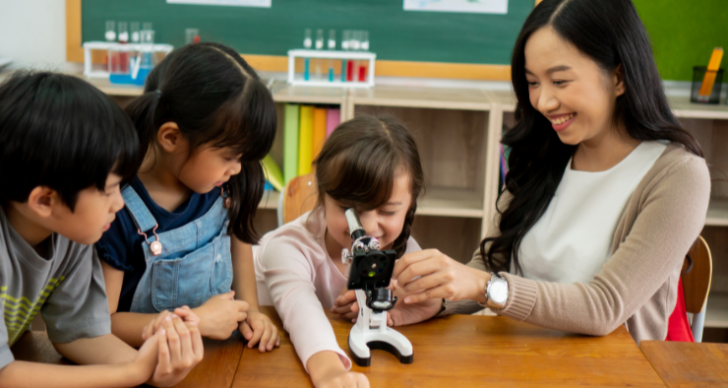There is a lot to think about when planning and delivering a lesson. It can be challenging to remember how to apply specific techniques and find the time to embed them. From creating a supportive learning environment to managing the classroom, there are several ways you can support learners and enhance the learning process.
We have explored six key teaching skills, providing a taster of how you might develop your understanding of various techniques.
You can also download your free print-out to refer back to.
Planning
Planning is an important skill because it helps to ensure that lesson activities reflect the learning intentions. Do you feel confident adapting teaching plans to reflect the needs of your learners? For example, if your learners take longer than expected to master a key skill, it could help to increase the number of lessons on that particular skill.
Consider which learning intentions are the most essential for future learning, as this will help you to prioritise with confidence when structuring lessons. Take a look at The Anglo School in Uruguay applying this thinking when adapting plans.
Classroom management
Learners make more progress when lessons are dynamic and exciting. By creating a productive classroom environment and providing effective instructions, learners are more likely to stay on-task throughout the lesson. It is helpful to keep rules and routines as clear and positive as possible, and to discuss them openly at the beginning of the year.
Do you set clear expectations for learning behaviours? How do you respond to distracting behaviours? These are questions to explore when it comes to effective classroom management.
Clarity of instruction
There are various ways to improve the structure of learning. Throughout the lesson, provide opportunities for learners to process new knowledge. You may decide to give them some extra thinking time or ask some questions to reinforce the learning.
When answering questions, learners are able to verbalise their thinking, which helps to build their confidence in the classroom. Support learners by acknowledging correct answers and challenge them by asking follow-up questions that delve deeper. Learners often have different levels of understanding, which is where differentiated questioning is effective.
Active learning
There are countless different active learning techniques, but they all have the same core aim: to engage learners as active participants of learning. Encourage learners to be curious about their learning and reflect on why it is important to their lives beyond the classroom. When learners actively engage, they feel a greater sense of ownership over their learning.
You may decide to include an opportunity for discussion at the start of each unit or in the middle of each lesson. In this short video, you can see Botlhale School in Botswana encouraging active learning in this way.
Creating a supportive environment
A positive relationship between learners and their teachers and peers is important to help them feel supported and encourage more on-task behaviour. Do you provide learners with the opportunity to interact with each other during lessons?
By learning with their peers, students build essential skills such as collaboration, empathy and communication. Consider how to create an environment where learners feel comfortable asking questions and sharing their opinions, in order to clarify and extend their thinking.
Assessment for learning
Assessment for learning aims to understand how learners are progressing towards the learning objectives, in order to give them actionable feedback on how to improve. It is helpful to reflect on the information you gather from assessments to identify how to improve teaching practices.
What aspects of the lesson have learners found enjoyable and why? What issues may have contributed to shared misconceptions? Use learner data to inform future lesson plans, identify areas where further clarification is needed, and make lessons fun! Watch the video from Monte International School in India, to find out more about how you can use data to reflect on your teaching practices.
You will find these skills with accompanying sub-skills in our Cambridge Teaching Skills Roadmap, along with more video examples, lesson planning template and downloadable action plans.





